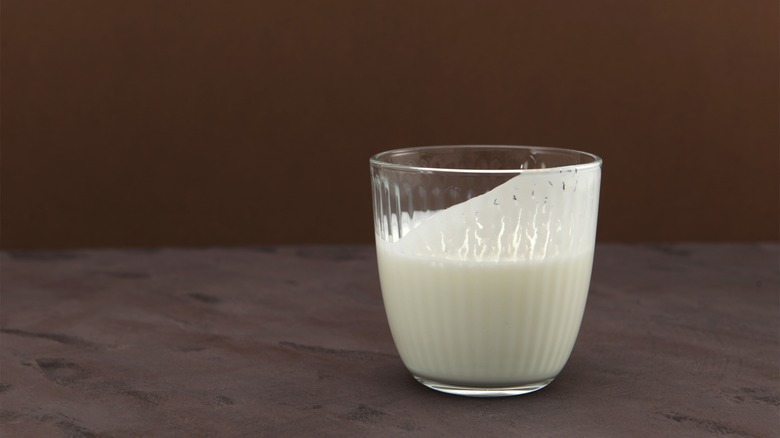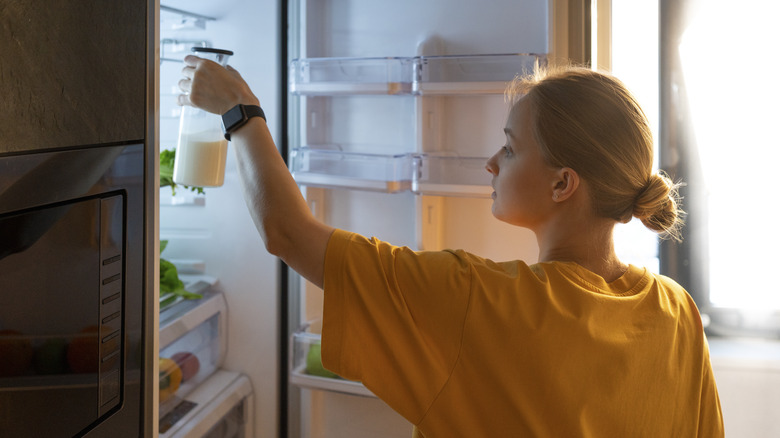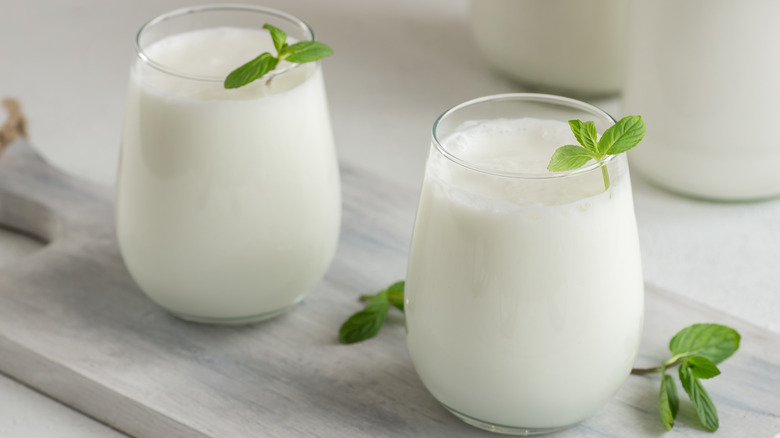How Long Buttermilk Stays Fresh After Opening
Whether you're slicing into basic buttermilk pancakes or noshing on some buttermilk biscuits, the delectable experience you're having is all thanks to one common denominator — buttermilk. But as revealed in the name, this is a dairy product composed of rather sensitive elements. Butter and milk both require extra attention, as they'll spoil quicker than you realize if not used up quickly enough or stored properly. Put the two together, and you've got a mixture that requires plenty of care to help maintain its integrity.
In best-case scenarios, buttermilk will usually last you about two weeks after opening. That's the case for cultured buttermilk at least, which is the kind most commonly sold at grocery stores. It's fermented, contains bacterial cultures, and has undergone a heating process that makes it last a bit longer. The exact timeline is dependent on a few other factors, though, such as the environment you're keeping it in. These details make it all the more important to familiarize yourself with buttermilk's expected shelf life, how you can draw its use out, and signs of spoilage.
How to extend buttermilk's shelf life
Though 14 days is typically the maximum amount of time buttermilk will last, you can push that number by about a week past the product's sell-by-date in some cases. But that's only possible if it's kept in the right place and in the right conditions. If not, you'll find yourself with a funky carton of the stuff before you've had a chance to use more of it up.
To prevent this, buttermilk should be kept in the coldest part of your fridge, which is usually the back of the bottom shelf. Putting it in the freezer is also an option. It can be frozen for up to three months if you know you won't be able to use it by the specified expiration date. Just beware of a change in consistency, as this often happens once the buttermilk thaws out. From there, the dairy product is best used only for taste, such as in baking, rather than texture. The best course of action would be to buy some in a smaller container and avoid opening it until necessary. You can even wait to make buttermilk at home until right before use.
Signs your buttermilk is spoiled
Even with all the effort of making your buttermilk last as long as possible, it's still important to keep an eye out for signs it has gone bad. This can be somewhat difficult for a food item that's purposely creamy, thick, tangy, and sometimes even has small lumps. The more obvious clues will be there, though.
You'll know your buttermilk is spoiled when it has become much thicker and chunkier than it originally was, making it hard to pour. Any growth of mold or a change in color is another clear indicator that the product should be inspected. As for the scent, fresh buttermilk smells sharp and subtly sour, whereas bad buttermilk will be strong and overpowering. Lastly, if you're brave enough to risk it, you can always do a taste test. With this method, it won't be very hard to tell. The item will taste overly sour and be clumpy, and you'll know it's not something to use in your cooking anymore.


